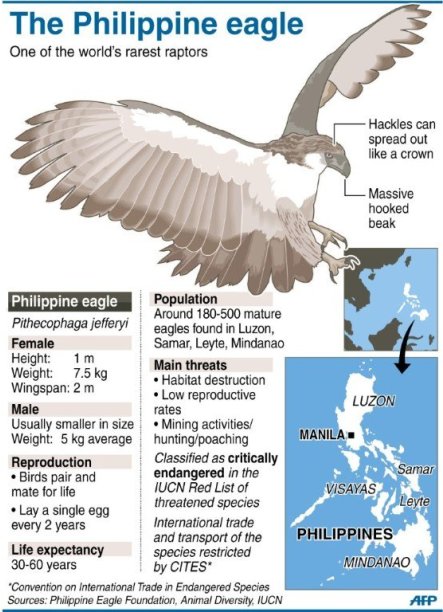 Right on a special occasion for the world came an offspring. The first Philippine eagle bred in captivity named "Pag-asa" had her offspring hatched.
Right on a special occasion for the world came an offspring. The first Philippine eagle bred in captivity named "Pag-asa" had her offspring hatched.

To those who still needs assistance and affected by the flood... You can call this numbers... PAGASA Philippine Atmospheric, Geophysical and Astronomical Services Administration: 433-85-26 NDRRMC (National Disaster Risk Reduction and Management Council): ( 911-14-06 ) / ( 912-26-65 ) / ( 912-56-68 ) MMDA Metro Manila Development Authority Metrobase: 136 PNP Philippine National Police: 117 MERALCO: 16211 Red Cross: 143 / (02) 527-00-00 BFP Bureau of Fire ...

And it's been a month since I heard about this innovation made by DOST... It was called "Project NOAH". The aim of the system is to predict the weather through the use of their advance technology. An online program that will tell the visitor the possibilities of rainfall shown in percentage and color coded maps. See this for example...

August 3, 2012 Didn't even heard that Typhoon Gener made a land fall but still, it left us terribly damaged. "Gener" with an International name of "Saolo" left the Philippines with 37 people dead and 33 were injured according to GMA News as of today. As I open social media sites, there were lot of posts there which hopes for the suspension of classes. There were no announced Typhoon Signal for Manila (the Capital of the Philippines) as far as I know but still, even college students were protesting for the suspension of classes through social networks due to strong winds and flooded roads.

Another event for helping the environment! A Run for Pasig River is annually held in different locations in the Philippines since 2008 (As far as I can recall). An annual event that encourages others to take action on the problems of the said river. We commonly know that fun runs are used to produce funds and increase awareness about something. Besides those funds doesn’t just go to someone else’s pockets but to the needy. In this case, our beloved Pasig River. So who is "Pasig River...

With all the terrifying news lately, I’ve seen an awesome portrayal of oneness to be highlighted. This happened during the second week of May. (Sorry I can’t specify the date, all I know is that they did this during this week) Had no internet connection for a few days. This video was aired last Tuesday (May 8, 2012)...